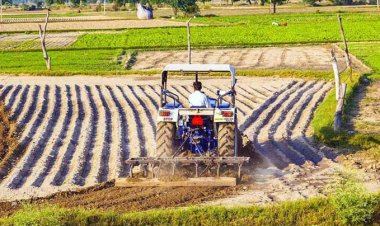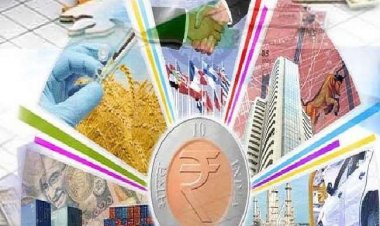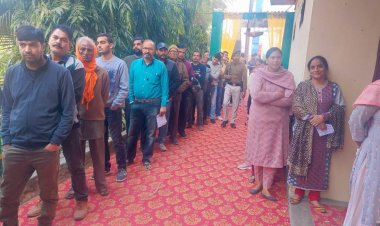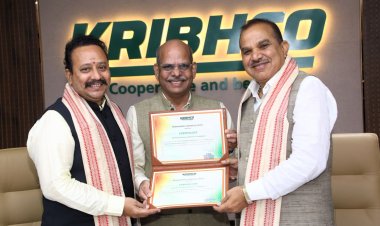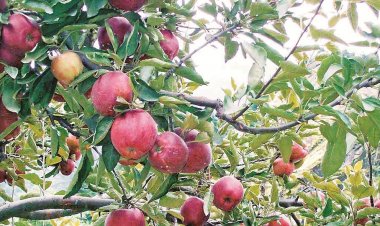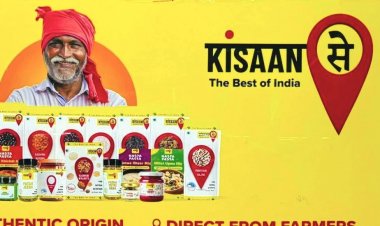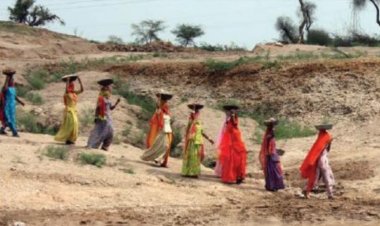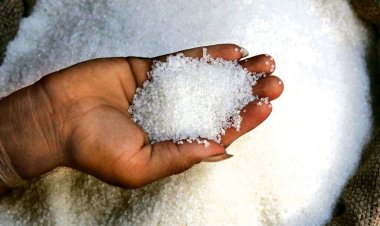FTAs, rural India and farmers
Conventional economic theory may suggest that the liberalization of trade policies results in net benefits to the countries opening up, but it may have some adverse consequences for some nations, and for the poor in particular. India has a set of unique developmental challenges, unlike the developed economies it is engaging with in these FTAs. Trade liberalization affects different countries and groups within an economy very differently. Agriculture policymakers and trade negotiators alike need to look into complementary policies to reduce the adverse consequences of liberalization through FTAs, particularly on vulnerable populations, to the greatest extent possible.
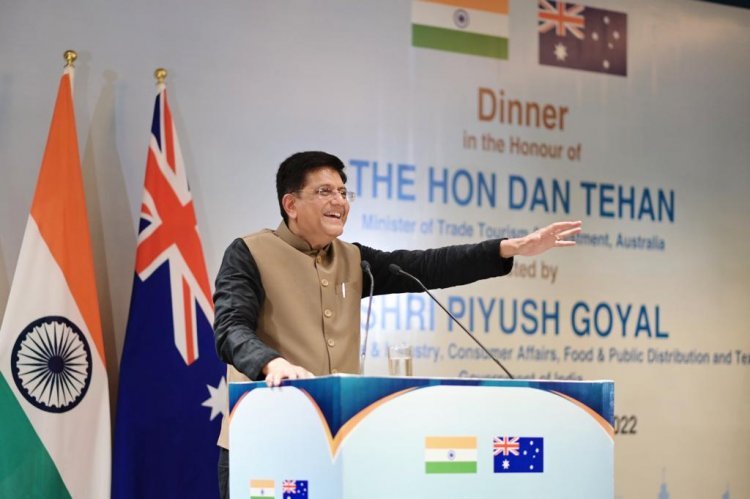
India is negotiating several free trade agreements (FTAs) with many developed countries. This indicates a shift in its erstwhile cautious approach towards FTAs. The earlier hesitancy of the Government of India (GoI) to engage in such talks at a bilateral level outside the multilateral system of rule-making on trade at the World Trade Organization (WTO), is now being done away with. These agreements comprise legally binding commitments. India has now to brace itself for the demands from much stronger trading partners in areas that it has previously resisted in trade fora, such as stronger intellectual property (IP) and sustainability chapters.
The negotiating countries on the other side have neither large rural populations nor as many smallholder farmers to worry about as does India. According to the Census of India 2011, 833mn Indians live in rural areas, which is more than two-thirds of the country’s total population. And while there is some debate on the actual number of farmers in the country, the Ministry of Agriculture and Farmers’ Welfare (citing the Census 2011) claims that 54.6 per cent of India’s population is engaged in agriculture and allied activities. Thus, trade policy must ensure that FTAs should not jeopardize the wealth and well-being of this majority.
There is a belief that India’s agriculture will be well served by seeking access to foreign markets for its agricultural products. The Agricultural Export Policy (AEP), 2018, makes this policy intent clear. However, the policy acknowledges that the benefits from market access can only accrue if properly supported by infrastructure, institutional back-up, packaging, freight transport and connected to the internal production system. The policy also acknowledges that non-tariff barriers (NTBs) and stringent quality/phytosanitary standards are becoming the norm for restricting/preventing market access. Thus, mere signing onto a trade deal does not translate into benefits for small producers and agricultural workers automatically. In fact, there must be ex ante assessments of the possible costs and benefits to such smallholders. The ecological and social costs of orienting agricultural production for exports must also be factored in.
Additionally, ex post there needs to be a mechanism to monitor the hard-fought negotiated positions and the texts reflecting them. Among the most recent FTAs that India has entered into is a Comprehensive Economic Partnership Agreement (CEPA) with UAE[1], which was signed between the two on 18 February 2022 and came into force on 1 May 2022. Therein (in Chapter 4 of the CEPA) it was agreed that the sanitary and phytosanitary (SPS) measures mutually agreed and binding between India and the UAE will apply. But the UAE now appears to be applying the European Union’s (EU’s) pesticide maximum residue limit (MRL) of 0.01 parts per million (ppm) for several pesticides and food commodities.[2] This could lead to the rejection of India’s agricultural export consignments.
An Economic Cooperation and Trade Agreement (ECTA)[3] was signed on 2 April 2022 with Australia. It was ratified by the Australian Parliament on 22 November this year. This Australia-India ECTA will come into force on 29 December 2022. It has been welcomed by the Grain Trade Australia (GTA) Pvt Ltd — the focal point for the commercial grains industry within Australia, which is highly export-oriented. As stated by GTA, (t)he proximity, population and growing purchasing power of India’s consumers will create new opportunities for Australian agricultural exports, particularly grains.[4] In terms of meaningful market access outcomes, the GTA encourages the Australian Government to seek tariff-free market access or failing that at least tariff-free quotas for Australian grains together with MFN status. Australia is also looking to expand the export of pulses, wines and horticultural produce to India. The FTA will also make it easier for Australian sheep meat and wool. Though India’s dairy sector has been kept out of the purview of this FTA, livestock has been put on the ‘exclusion list’ for any tariff reduction commitments from India’s side. However, Australia only sees this form of ECTA as an ‘interim’ one, before a more comprehensive one is agreed to in the future.
India is also currently in talks with the Canadian government for a Comprehensive Economic Partnership Agreement (CEPA) with Canada. The top category of agri-food exports from Canada to India in 2021 was dried and shelled lentils, with a value of Can$510.4mn.[5] The Canadian Agri-Food Trade Alliance (CAFTA) sees India as a major export market for Canadian agriculture and agri-food products.[6] India currently applies a 30 per cent tariff to all Canadian lentil exports. CAFTA hopes that the CEPA would help to eliminate tariffs on lentil products, which could potentially result in a 147 per cent increase in exports by Canada over a period of five years. On the India side, this will have to be reconciled with the GoI’s stated objective of boosting pulses production in the country with the aim of reducing the dependence on imports.
Another significant FTA that warrants mention is that with the United Kingdom (UK). On the table with the new Prime Minister of UK, it is something that was an equal priority for his predecessors keen to expand UK’s trade post-Brexit. The UK India Business Council (UKIBC) advocates reducing tariffs in a limited range of sectors, including alcoholic spirits, food, and in the healthcare sector.[7] As of September 5, India and UK trade negotiators have reportedly completed discussions on 19 out of the proposed 26 chapters under the proposed FTA. The sticking points that remain include IP and the alcohol industry.
An FTA with the European Union (EU) that was being negotiated since 2007 and was put on hold in 2013, has been revived as well. The third round of talks is taking place in New Delhi from 28 November to 9 December 2022. The FTA will not provide India with any solutions to the longstanding concerns over the EU’s agricultural subsidies while it could pose risk to India’s small dairy producers. Additionally, IP demands, such as for the International Union for the Protection of New Varieties of Plants (UPOV)-1991 compliance could put at risk the seed freedoms guaranteed to farmers under the national Protection of Plant Varieties and Farmers Rights (PPV&FR) Act. EU also wants a stand-alone agreement on Geographical Indications (GI), even though India already provides GI protection for EU’s agricultural products, such as ham from Italy. The second round of EU-India negotiations on the specific agreement on GIs took place 10-12 October 2022 in Brussels and the third round will be held 12-13 December 2022.
Due to the European Commission’s ‘Transparency Policy in DG Trade’, the Commission systematically publishes its recommendations for negotiating directives and EU’s initial proposals for legal texts for an FTA so that all interested stakeholders can follow the discussions. The textual proposals tabled by the EU for the India-EU FTA can be found here: https://policy.trade.ec.europa.eu/eu-trade-relationships-country-and-region/countries-and-regions/india/eu-india-agreement/documents_en. However, India’s proposals are not publicly accessible.
The very process of entering into FTAs is another area that ordinary citizens, including farmers’ groups, need to give attention to. Usually, these talks are non-transparent and non-inclusive, with official negotiations based on publicly undisclosed negotiating draft texts. Often big businesses and corporate bodies like CII are consulted. Broad-based consultations with farmers’ groups are not institutionalized into the process. There are no substantive discussions in both Houses of Parliament either. While the AEP talks of ‘greater involvement of state governments in Agri Exports’, they are not really consulted during any FTA negotiations. The involvement of state governments remains extremely limited in spite of many critical issues being on the State List or Concurrent List (under the federal arrangement of the Constitution of India). Thus, apart from the substance of these agreements, the process of entering into these FTAs needs serious examination and engagement by farmers’ groups and those concerned with sustainability in agri-food systems.
In addition, India is engaged in the multi-country Indo-Pacific Economic Framework (IPEF), an agreement that goes beyond traditional trade and investment issues. This is proposed and pushed primarily by the US. Launched by US President Joe Biden, it seeks to bring together 14 countries in the Indo-Pacific to balance China’s weight in the region. The talks are being conducted in secret[8] to advance US corporate interests. The first negotiating round of the IPEF is being held in Brisbane, Australia 10-15 December 2022. While India has opted out of the trade pillar of the IPEF for now, it has joined its three other critical pillars, namely supply chains, clean economy and fair economy. These will also have major implications for India’s macroeconomic policies, limiting domestic policy space.
All the recently signed FTAs, and more so the forthcoming FTAs, will have an impact on agriculture through multiple channels, and not only through the specific chapters on agricultural trade. The new-generation FTAs cover a range of other issues; for instance, chapters on financial services that could determine the course of rural lending in the future. FTAs are also about increasing the trade volume, which means allowing for more import of both manufactured and agricultural goods. In agriculture and domestic industries that employ a large labour workforce, the possible adverse impacts on employment too can be anticipated. This is particularly true for sectors including agro-processing sectors and dairy, etc. On the other hand, given major standard barriers, it is unlikely that India can increase its exports significantly.
In addition, the EU, the US and the UK are seriously pushing for liberalization of government procurement in these FTAs, which gives large companies the right to bid for all government purchase contracts for goods, services and construction as well as public works. This could play out in sectors like the Indian railways, and in principle even in the public distribution system (PDS). Any liberalization of government procurement can adversely impact the preferential market access presently enjoyed by Indian micro, small and medium enterprises (MSMEs), women-led small businesses, as well as Khadi and village industries, which employ millions of India’s workers.
Finally, access to medicines, vaccines and tests, the critical need for which has been felt the most during the Covid-19 pandemic, is likely to get severely impacted due to the demands of trade partners to raise IP commitments to WTO ‘TRIPS-plus’ standards, which will grant more market power to MNC patent holders while compromising access to technology and production capacity in India’s generic manufacturing companies. This will have an adverse impact on both employment and health by shrinking generic production and raising the cost of medicines.
Conventional economic theory may suggest that the liberalization of trade policies results in net benefits to the countries opening up, but it may have some adverse consequences for some nations, and for the poor in particular. India has a set of unique developmental challenges, unlike the developed economies it is engaging with in these FTAs. Trade liberalization affects different countries and groups within an economy very differently. Agriculture policymakers and trade negotiators alike need to look into complementary policies to reduce the adverse consequences of liberalization through FTAs, particularly on vulnerable populations, to the greatest extent possible.
(The author is a legal researcher and policy analyst based in New Delhi. She has been tracking trade rules since India joined the WTO in 1995. Her focus is on the implications for communities and conservation. She may be reached at emailsbhutani@gmail.com.)
[1] https://commerce.gov.in/international-trade/trade-agreements/comprehensive-economic-partnership-agreement-between-the-government-of-the-republic-of-india-and-the-government-of-the-united-arab-emirates-uae/
[2] https://www.financialexpress.com/opinion/the-uaes-u-turn/2898269/
[3] https://www.dfat.gov.au/trade/agreements/negotiations/aifta/australia-india-ecta-official-text
[4] https://www.graintrade.org.au/sites/default/files/GTA_Submissions/GTA%20IndiaFTASubmission_Final_081121a.pdf
[5]https://agriculture.canada.ca/en/international-trade/market-intelligence/reports/market-overview-india-0
[6] https://cafta.org/trade-agreements/canada-india-cepa/
[7] https://www.ukibc.com/wp-content/uploads/2022/11/Doing-Business-in-India-Report-2022-UKIBC-November-2022.pdf
[8]http://aftinet.org.au/cms/aftinet.org.au/cms/latest-news/IPEF-secrecy-deal-challenges-Labor-policy



 Join the RuralVoice whatsapp group
Join the RuralVoice whatsapp group




















